 |
|||
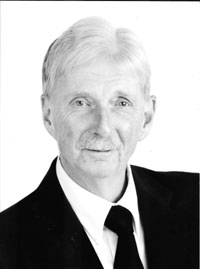 |
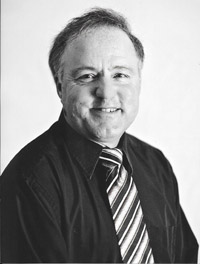 |
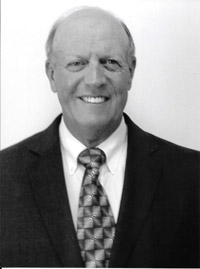 |
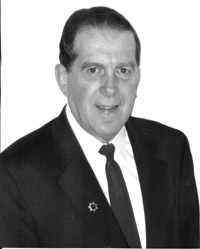 |
Rick Fedoruk Berrien Springs |
David Gasper Chesaning |
Jim Hanson Novi |
Joseph Marazita Brandywine |
(click on Inductee's name to read 'description')
 |
|||
 |
 |
 |
 |
Rick Fedoruk Berrien Springs |
David Gasper Chesaning |
Jim Hanson Novi |
Joseph Marazita Brandywine |
(click on Inductee's name to read 'description')
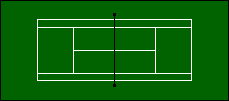
 Rick Fedoruk, Berrien Springs High School
Rick Fedoruk, Berrien Springs High School In 1972, Rick Fedoruk took his Class B Detroit Austin team to the state finals at Stowe Stadium in Kalamazoo. Those were the days when all classes met at one venue to determine state team and individual champions. Those were also the days when at best, six players could qualify – usually only three: one singles player and one doubles team. Rick’s “team” took second place in then-Class B with 8 points. Cranbrook took first with 9.
From there, Rick’s career path took him from Detroit to Colorado Springs to Battle Creek before ending up in Berrien Springs in 1983. By that time, the mockery of what used to be considered the state team championships was rectified when schools which qualified were able take all flights to the final tournament to compete in separate draws.
This was a game changer for Rick who had successfully competed in what some coaches described as the bubble of Southwest Lower Michigan. Although his squad would qualify with, say, doubles teams which had virtually unblemished records, he discovered that it was a whole new ball game when those players down deep in the lineup had to compete at the state level.
Rick learned that strength of schedule matters more than undefeated dual meet season against weak opponents. The result: “He didn’t have the undefeated teams but he found the competition beneficial,” says Hall of Famer Jim Cummins of Battle Creek Springfield. “He played in my tournaments until our school closed. We developed a friendship that I have enjoyed. I found his players competed fairly and with good sportsmanship.”
Part of this is due to early training. At the beginning of every season, each of Rick’s players is given a notebook consisting of three parts. The second has to do with the rules of tennis and court behavior. Each player is given a Code of Conduct card, reads a section on spectator guidelines, and is given a 30-question test.
But it is one thing to provide book learning and quite another to put it into practice. One element: start kids playing early. Rick established the Berrien Springs Middle School Tennis Program in 1986 and instituted a No-Cut policy long before it became a USTA staple. He established a summer camp in 1987 for 6-13 year-olds and brought the USTA Schools Program to the community. This included free instructional drills, tennis activities for physical education teachers, a school assembly, and free rackets for the elementary school. When they got to high school, he developed an overnight preseason tennis mini-camp for his teams.
After 36 years of coaching: 313 career wins, 8 conference championships (and 12 second place finishes), 12 regional championships, and 26 trips to the state finals where the Shamrocks have finished in the top ten 8 times. Nine of his players have finished in the quarterfinals or higher. Fifteen have been named All State (five additionally were Honorable Mention), and nine have gone on to play college tennis.
In 2002, Rick established the first girls varsity team at Berrien Springs and served as an assistant. It was cut in 2003 but he re-established it in 2011. Since then, this team has never missed a state final appearance.
“I’ve played his teams early in the season and then later on in the schedule,” says Allegan’s Gary Ellis whose squad also competes in the Wolverine Conference. “The team we’ve played later in the season has always been better than in the first match. He does a nice job bringing them along.”
And since 1986, he has also accomplished all of this on only four courts, a situation that will be rectified in August 2017. That’s because the Berrien Springs school board approved a 1.5 million dollar project to build a 12-court tennis complex. “After 30 years, I finally get a water fountain at our courts,” he says. Moreover, he can then host regionals and the conference tournament.
Rick was chosen state coach of the year in 2007. He can now preside over the new tennis center as a member of the Michigan High School Tennis Coaches Hall of Fame.| Back to Top |
 David Gasper, Chesaning High School
David Gasper, Chesaning High School Chesaning is a rural village in mid-Michigan with a population of approximately 3,000. The tennis team, which plays in the Tri-Valley Conference, competes in Division 4. The nearest indoor tennis facility is 50 minutes away. In 1981, the outdoor facilities consisted of four rough asphalt courts with wire nets. The high school program was hatched and nurtured in this environment.
More to the point, the program is also witness to the commitment of a dedicated leader. Over almost three decades, Dave Gasper has led the team: for 17 seasons as the boys varsity coach, for two seasons as the girls varsity coach, for seven seasons as the girls JV coach, and for four years as assistant boys coach. For 15 years, this was done on the aforementioned four courts, that is until 1996 when the facility was expanded to six.
And amazingly, during this time span Dave has endured only one losing season in 19 campaigns as head coach. He has taken eight teams to the state finals and compiled a total won-loss record—both boys and girls—of 151-51.
Perhaps even more importantly, Dave continues to leave a legacy of tennis for youngsters beyond their high school experiences. He has sent eight of his players to the Ferris State Professional Tennis Mangement Program. The Saginaw News calls it “a pipeline to professional tennis that runs through the Chesaning boys tennis program.” All eight, including Dave’s two sons, became teaching pros. Four of his former players are also high school head coaches, including Lincoln Wirgau of Bloomfield Hills Marian, MHSTeCA’s Girls State Coach of the Year in 2015.
A fixture in the Chesaning tennis community, Dave has run a summer program for the past decade and has been a tournament director for the yearly River Days Open in Chesaning for 22 years. He was the co-ordinator for Chesaning tennis leagues which ran from 1986-2014. Starting with seven participants that first year, he had 93 involved in multiple leagues by 1991. He was part of a group of four tennis boosters who would go into the middle school for three days each trimester to introduce tennis to the physical education classes. He helped develop the Middle School After School Tennis Program, one answer to the change of seasons decision that deprived him of football players-turned-tennis players.
He is the classic grass-roots coach, one who develops players before they reach high school. He is his community’s Mr. Tennis.
Case in point: Dave has lived in Chesaning his entire life. At age 30, he was introduced to the game by next door neighbor Jim Freeland. Together they formed adult leagues and the Chesaning Tennis Club. When Jim was hired as the high school’s tennis coach, Dave became his assistant. When Jim stepped down after six years, Dave was the natural choice.
“Most times if you drive by the tennis courts, Dave is either out there playing the game or teaching it to someone else,” says athletic director Robert Sager. The community finally passed a millage that resulted in eight new courts with new fencing and lighting.
Just as important is Dave’s low key approach. “His kind demeanor with the kids deserves anyone’s admiration,” says Hemlock’s Ron Kunold. “He doesn’t yell at his players,” adds Hall of Famer Bob Quinn. “I’ve not seen him lose his temper or be rude with anyone,” says Gary Azelton, who grew up in Chesaning with Dave.
Every time I see him, he can’t wait to introduce me as the Hall of Fame coach,” says Ron (Class of 2001).
Now, Ron can return the gesture.| Back to Top |
 Jim Hanson, Novi High School
Jim Hanson, Novi High School“For years, I have wanted him to win a state championship,” says Eric Gajar of Ann Arbor Greenhills who himself is no stranger to state titles. “I always found myself rooting for him. It was such a pleasure to play him and his boys despite them consistently having a stronger team and having (for Jim) nothing to gain by playing us. His kids are so respectful. They do all the little things, like providing snacks and water.”
“He is one of my favorite people to play,” chimes in Mark Sobieralski of Grosse Pte. University Liggett who himself is the winner of state championships. “We have such good battles. His kids compete hard but have good sportsmanship, a reflection of their coach. Jim never had a bad thing to say about anybody. He was gracious whether he won or lost.”
This is testimony from two state champion coaches who ultimately got their wish: a peer who has achieved the ultimate goal. Although often coming close, Jim Hanson guided his team to the state titles in 2014 and again in 2015 (tied with Bloomfield Hills High School).
It has been the culmination of 37 seasons as boys tennis coach, first at Livonia Clarenceville from 1970 to 1983 and then at Novi High School from 1995 to 2015. Indeed, his Novi boys teams were strong long before the state championships. They captured 8 regional titles and qualified for state competition 7 additional times. In addition to two state titles, they were state runners-up twice, finished fourth once, fifth five times, and sixth twice. Jim’s teams compiled a record of 221-31-10.
His girls at Novi were also a force. He started coaching them in 1984 and achieved a record of 294-87-12 after 32 seasons. They won five regional titles and qualified for state competition an additional 10 times. His kids finished fourth in the state three times and fifth twice
This is a man who has coached 71 teams in 47 years. He has run a summer program for over 40 years at no cost to the players. He has managed 24 regional tournaments (13 boys and 11 girls) and 31 invitational tournaments. His overall record is an astounding 584-242-22.
To be sure, Jim’s achievements have gone neither unnoticed or unappreciated. At the local level, his peers have voted him Regional Coach of the Year 19 times (9 for boys, 10 for girls). The MHSTeCA board voted him State Coach of the Year three times: Boys in 2002 and 2012; girls in 2005.
But beyond all this achievement is the appreciation of rival coaches who marvel at what a class act Jim is. “After years of competing with Jim and his Novi teams, the best compliment I can pay him is that he would be my first choice to coach my own kids,” says Brighton’s Jeff Miner, himself a COY (Girls, 2006). “He is very competitive and hates to lose but is always gracious in victory and defeat, though the latter doesn’t happen very often with his team.”
“Several years ago during a dual match between our teams, a situation arose that called for a line judge,” continues Jeff. “Jim and I flipped for it, and he lost. A couple of my parents questioned whether he would be impartial, as his own team was playing. I told them that if anything, it was going to help us. I knew Jim would bend over backward to be fair, and if any team was going to be given the benefit of the doubt, it would be mine.”
Clearly, this coach is a gentleman who demands that his kids behave the same, and they do. “I’ve come to know Jim since our days of competing in the old KVC,” says Sean Beacomb of Lakeland High School. “I’ve been impressed with his teams’ talent and --more so -- that talent combined with an overall team of class act behavior. This is a direct reflection of Jim’s leadership. He’s a teacher which commands that respect, yet he’s a gracious and personable coach. I’m glad to know and compete against him.”
Jim has coached for six years after retiring from teaching chemistry and advanced placement chemistry. He plans to continue for one more year but “at age 70, I should be focusing on playing more golf.”
Jim’s body of work over so many years is simply mind-boggling. But beyond the staggering statistics is a rare individual who embodies the best of what it means to be a high school tennis coach. His presence elevates the Hall of Fame.| Back to Top |
 Joseph Marazita, Brandywine High School
Joseph Marazita, Brandywine High SchoolAs a young boy in Buchanan, Joe Marazita grew up living and breathing tennis. The game was a family passion that went way back. His grandfather Francesco, having left Italy for the U.S. -- then back to France to serve our country during WWI -- was granted citizenship having been wounded there. This allowed him to bring his wife and children to Niles. All seven brothers and one sister used tennis as a vehicle to practice their English and to socialize. They were good: Multitudes of city championships ensued over the years.
Joe continued the family tradition. By the time he was 15, he had captured numerous city championships in singles and doubles and even represented the United States vs. Canada in the CANAMER Olympics. He played 1S for four years at Buchanan High School, received a tennis scholarship to Northern Michigan University, and went undefeated his freshman year, the first of two years as a varsity player there.
Joe started coaching the boys at Brandywine High School in 1994 and assisted Pam Porter with the girls. When Pam left for Stevensville Lakeshore three years later, he took over the girls. “I fell in love with the warm weather, the significant improvement in players’ attitudes, and being able to start the season right at the end of my summer program,” he says. Giving up the boys enabled him not only to focus on the girls but to also coach two of his daughters.
It hasn’t been particularly easy. Brandywine doesn’t have courts; therefore the team practices and plays matches on Niles public courts located four miles away. His 1991 Dodge van, famously know as the BTV (Blue Tennis Van), serves as the equipment shed and scoreboard. Joe had to borrow score posts from Buchanan’s Steve Bender, and warm-up jackets were purchased through donations, often enough from the coach and his wife Kathy. In addition, Joe used his backyard tennis court for cookouts, alumni tournaments, and team bonding.
In spite of being a Class C-D, D4 school, Brandywine has never forfeited a match even though the school offers four spring sports. He always uses all the dates allowed by the MHSAA and usually runs three tournaments a year (one indoor and two outdoor). “Being able to schedule Indiana teams helps,” he says. “I use doubleheaders during the week to offset the cancellations due to spring weather.
The result has been “his share of success” (his words). This includes nine conference titles and seven regional championships. There were three more trips to the state finals as runners-up and he had an individual qualifier three times. His best finish was 8th place, not too shabby for a public school with no courts.
“The players I get for tennis usually have never played the game before because tennis cannot be part of the Physical Education curriculum,” Joe says. But “he takes each new team member and turns them into tennis players,” says Jerry and Cheri Rissman, who watched their granddaughter blossom from a beginner to doubles to 1S under “Coach’s” enthusiastic approach. “Working with teenagers is like trying to nail Jello to a tree but somehow Coach Marazita nails it.”
Moreover, it’s fun to play for Joe. Jessica Blank, a star athlete in basketball and volleyball and the school’s co-valedictorian, played tennis for only one year before joining the team. “Tennis is the funnest sport I play,” she said at the time. “It’s relaxing, and Coach Marazita is the main reason I play. He’s a really really good coach.” Jessica only lost once in two seasons – at the state tournament against Sacred Heart Academy.
She is echoed by Mackenzie Shelton who wasn’t enjoying her soccer experience. “I played soccer last year and it just wasn’t fun,” she says. “I heard from everyone else that they just absolutely loved tennis. I had never touched a racquet in my life -- not once -- but I think Carlie (Newman) and I developed this fast because we had such an amazing coach.” MacKenzie and Carlie lost just four games in three matches on their way to the 3D title at the D4 regional. “Everyone said that tennis at Brandywine was fun and I wanted my last sport to be really fun.”
A Division 4 school, Brandywine is a close-knit family of athletes. Joe’s three daughters played tennis and two of them plus one son-in-law have been assistant coaches. By far the most important ingredient is Kathy, the irreplaceable (Joe’s word) wife who routinely does just about everything but coach on the court for the program. “My wife and I continue to stay in contact with many of our former players,” says Joe, “and they just love it when we refer to them by the nicknames that I give the players.”
“Today, more people address me as “Coach” than Joe,” he concludes. They can also address him as Mr. Hall of Fame.| Back to Top |